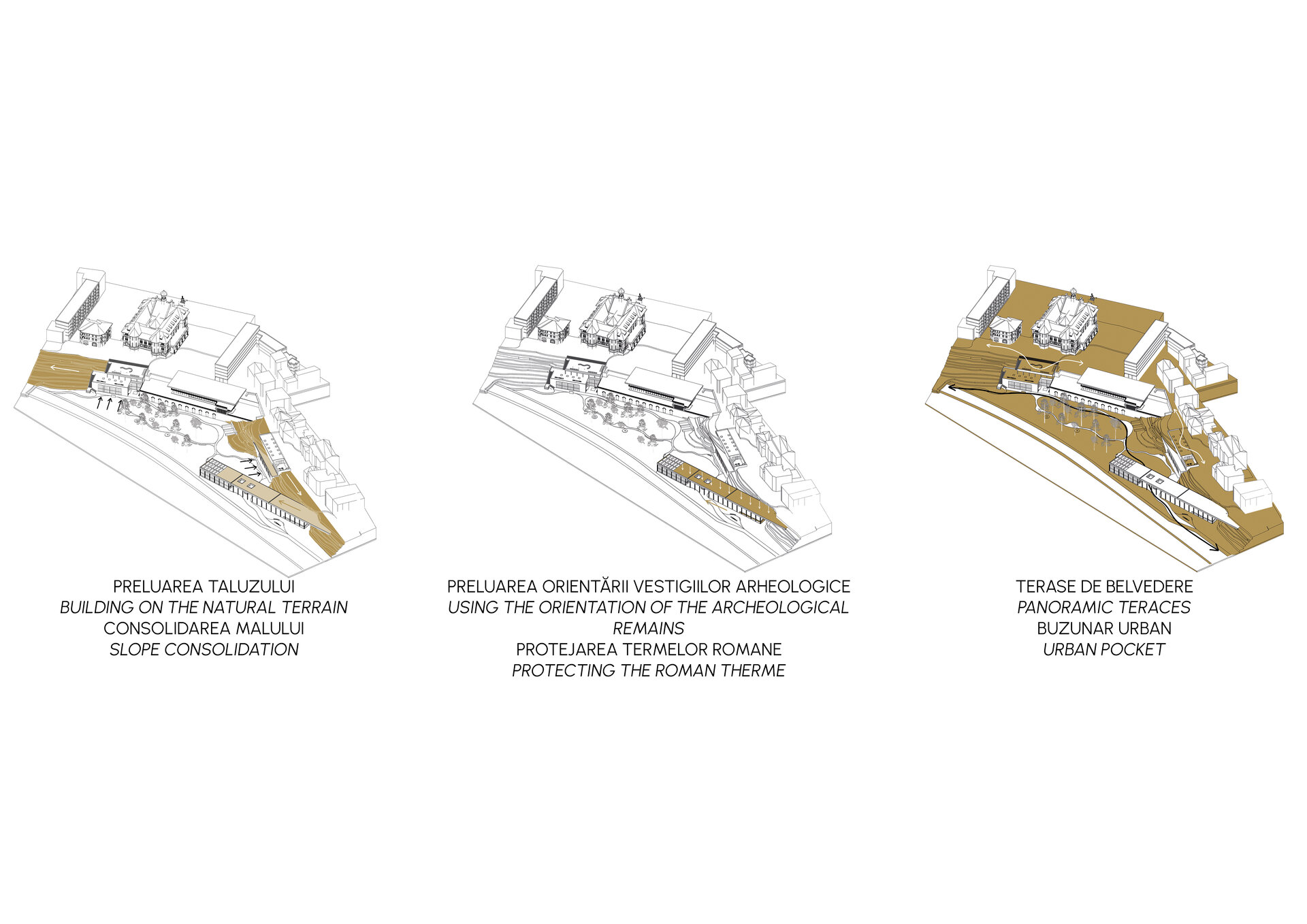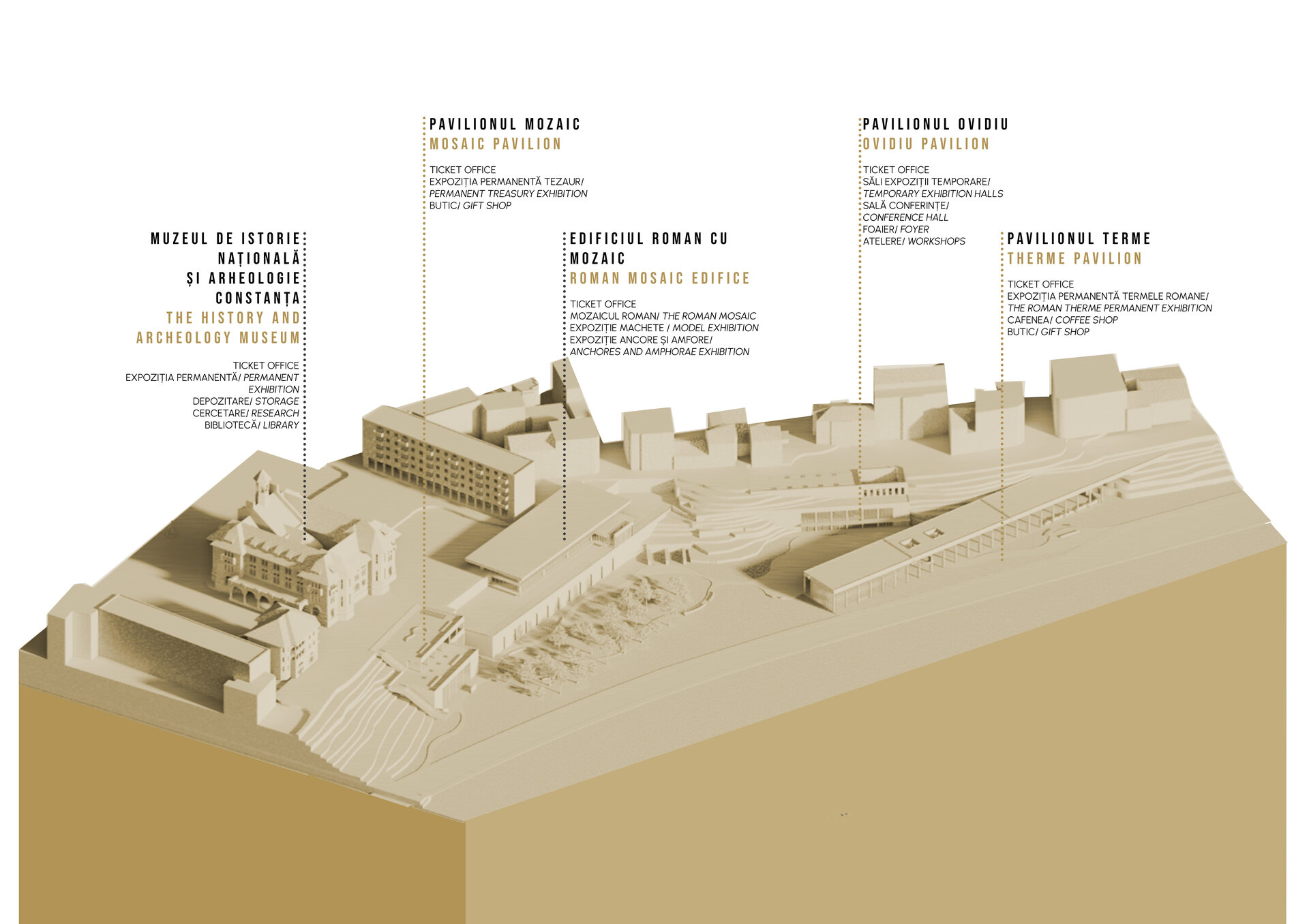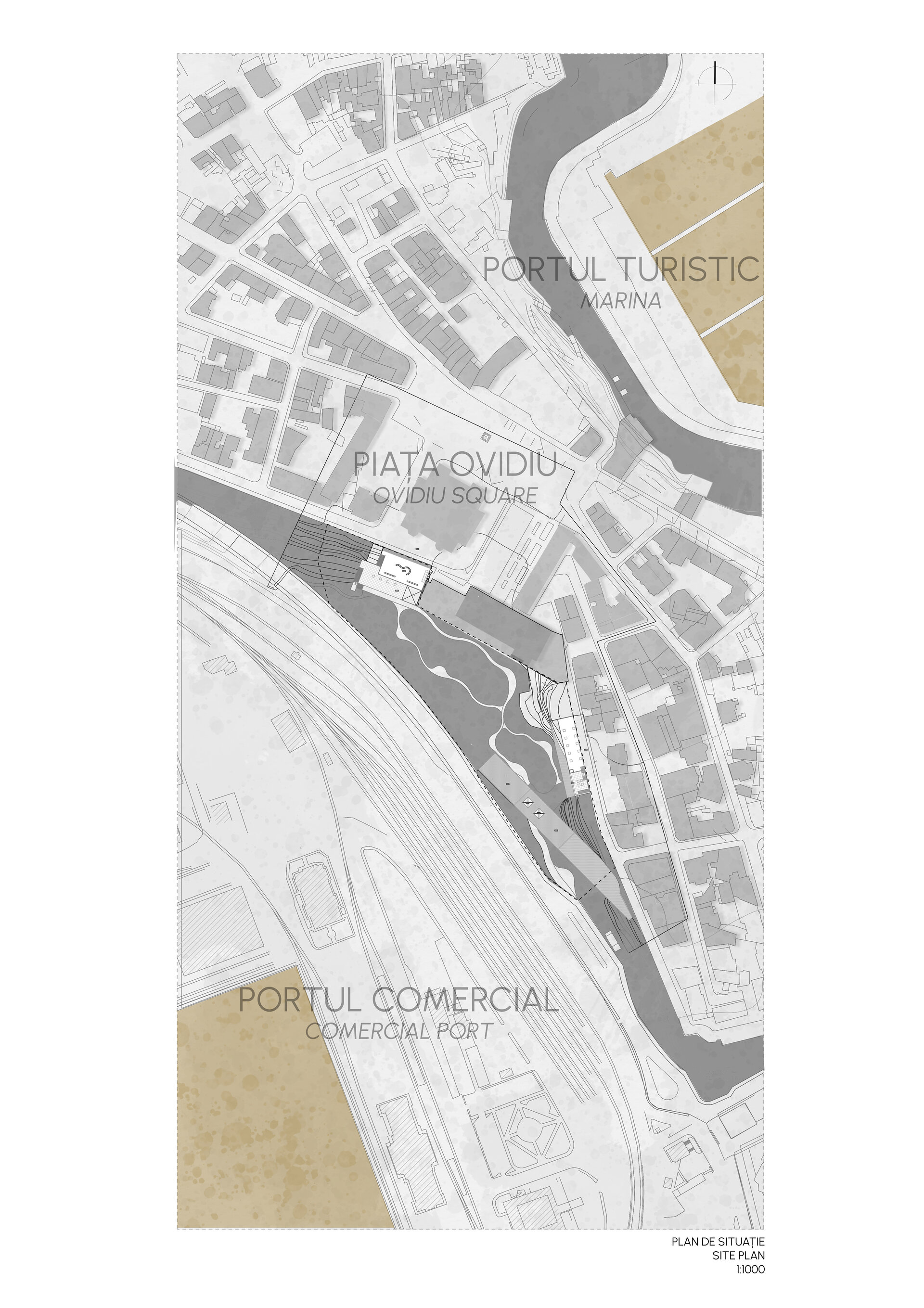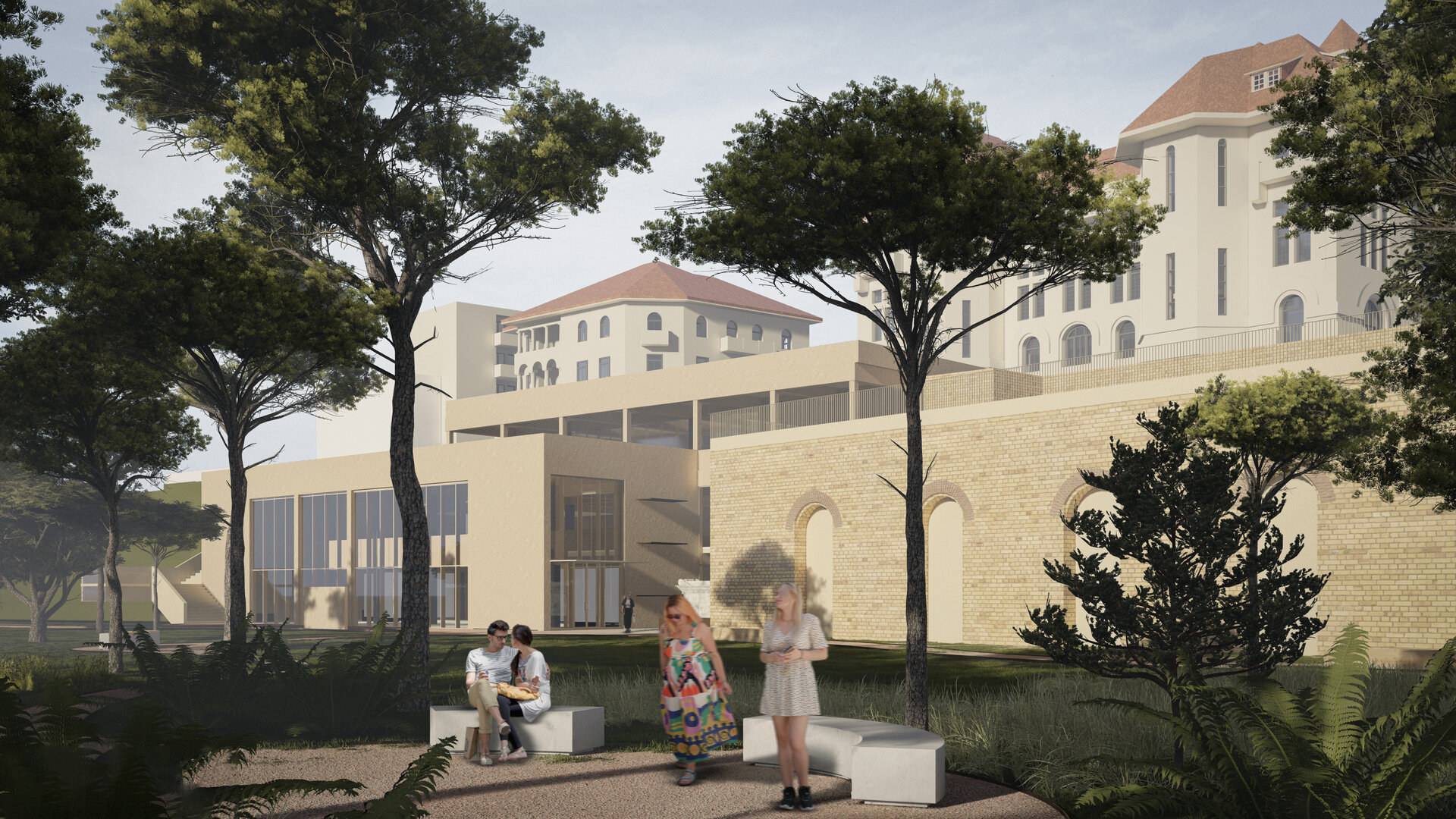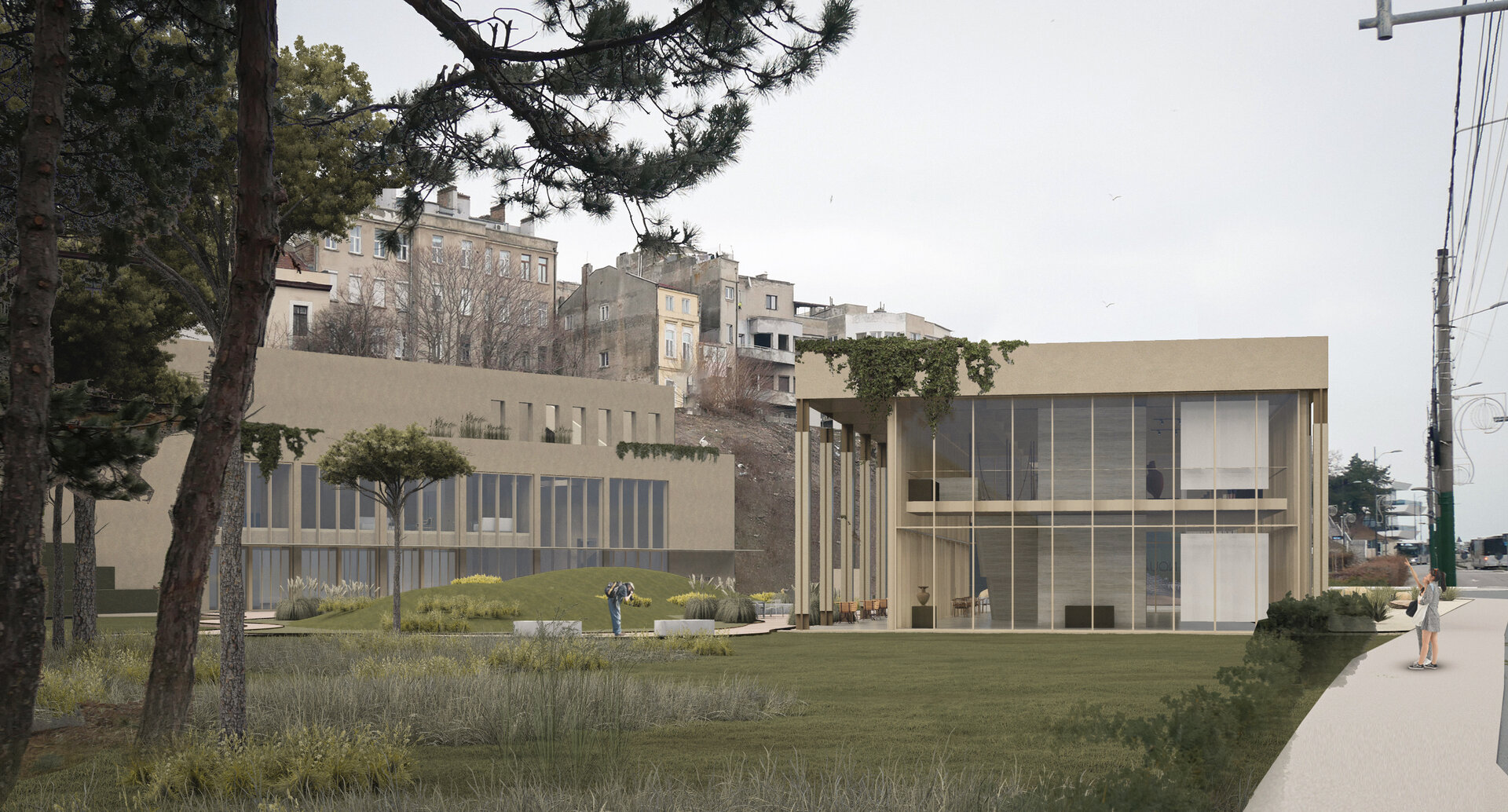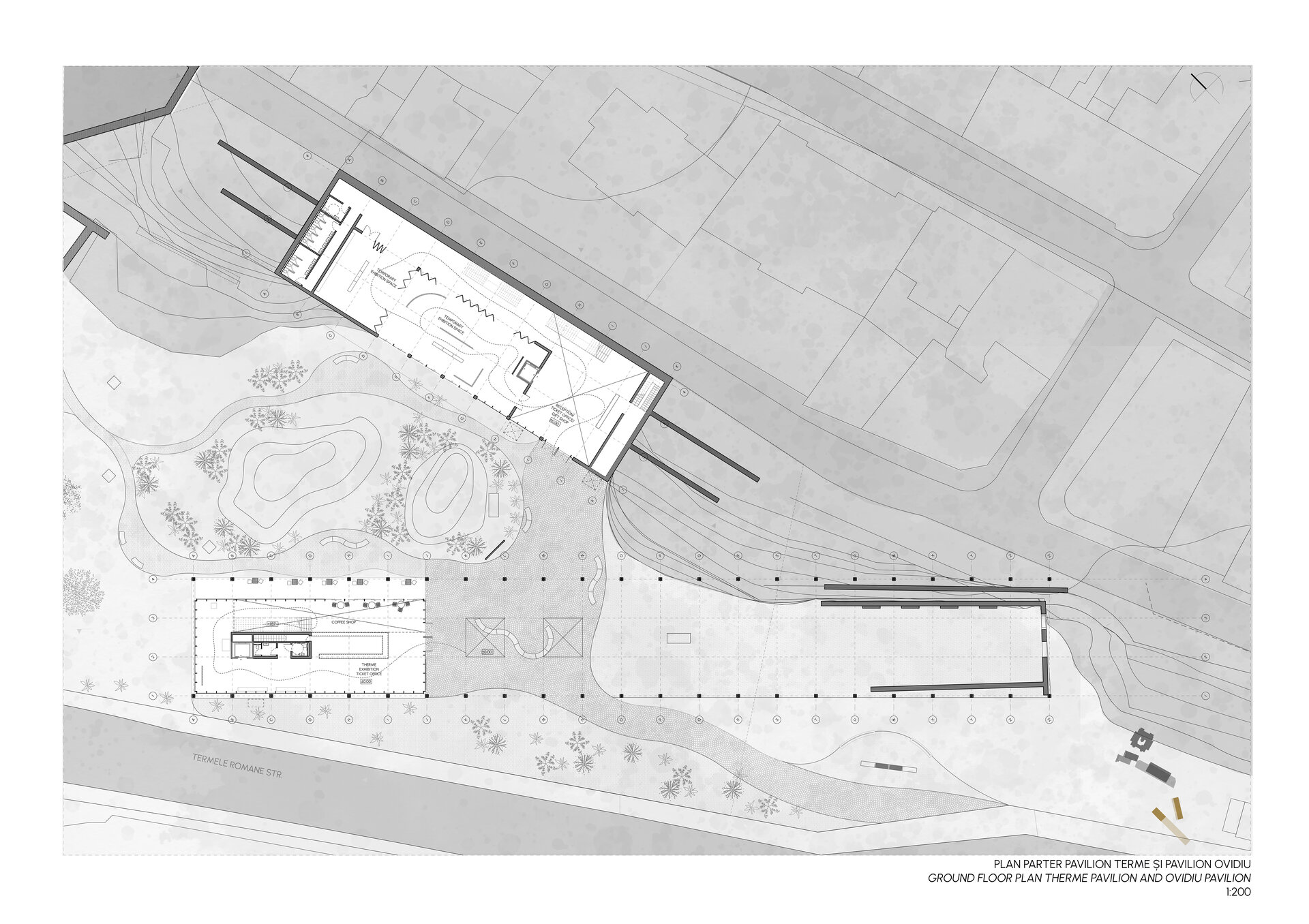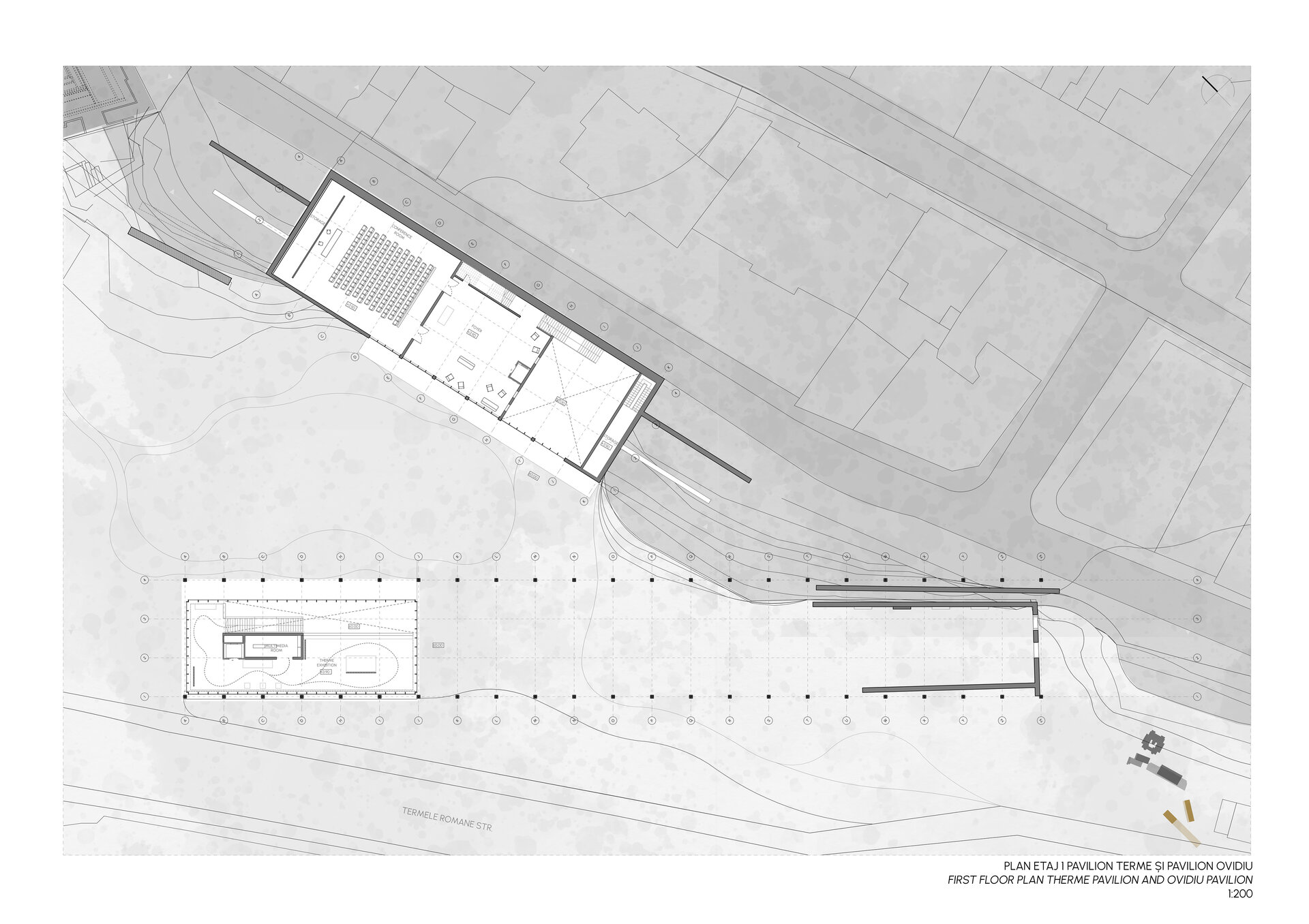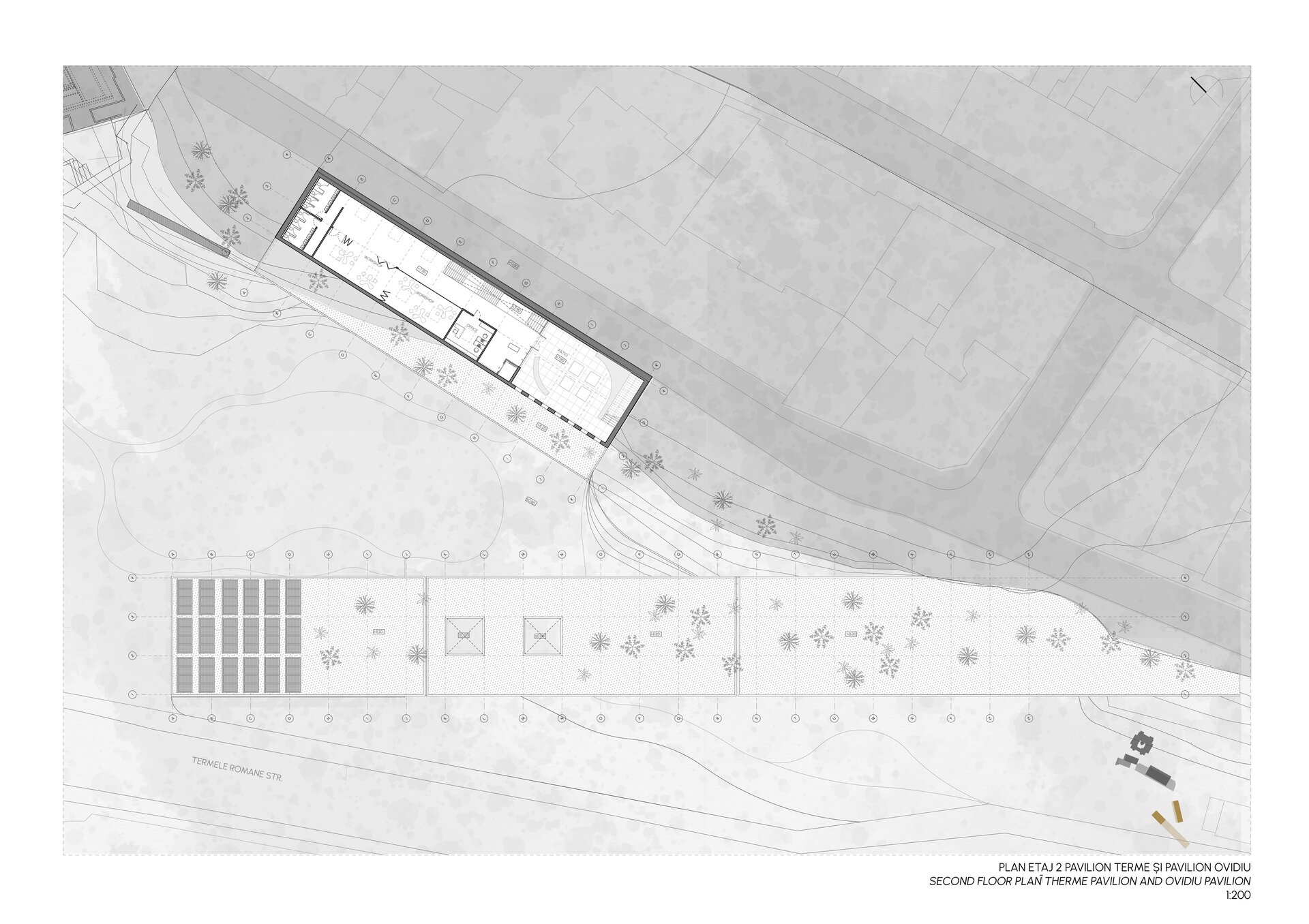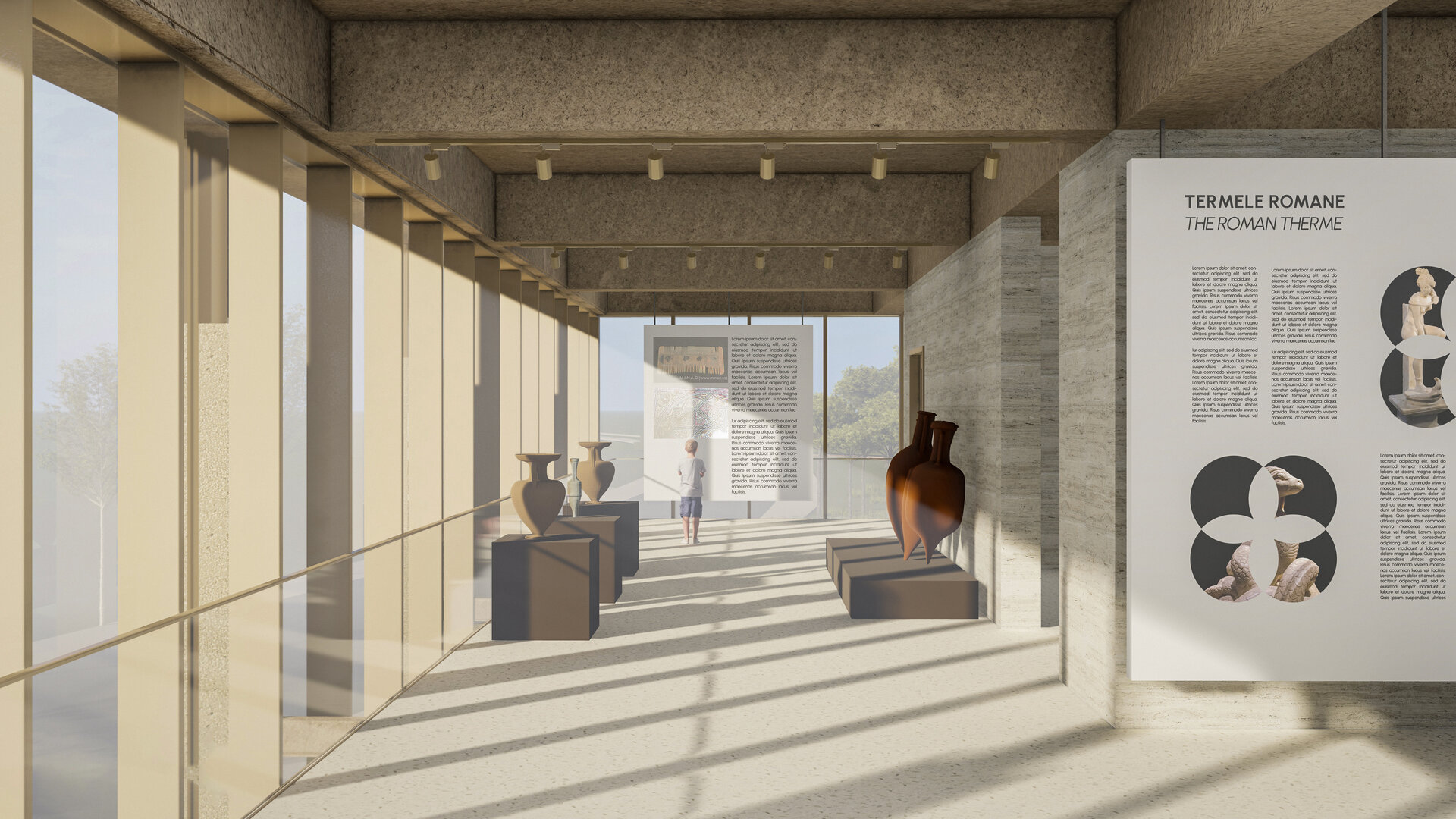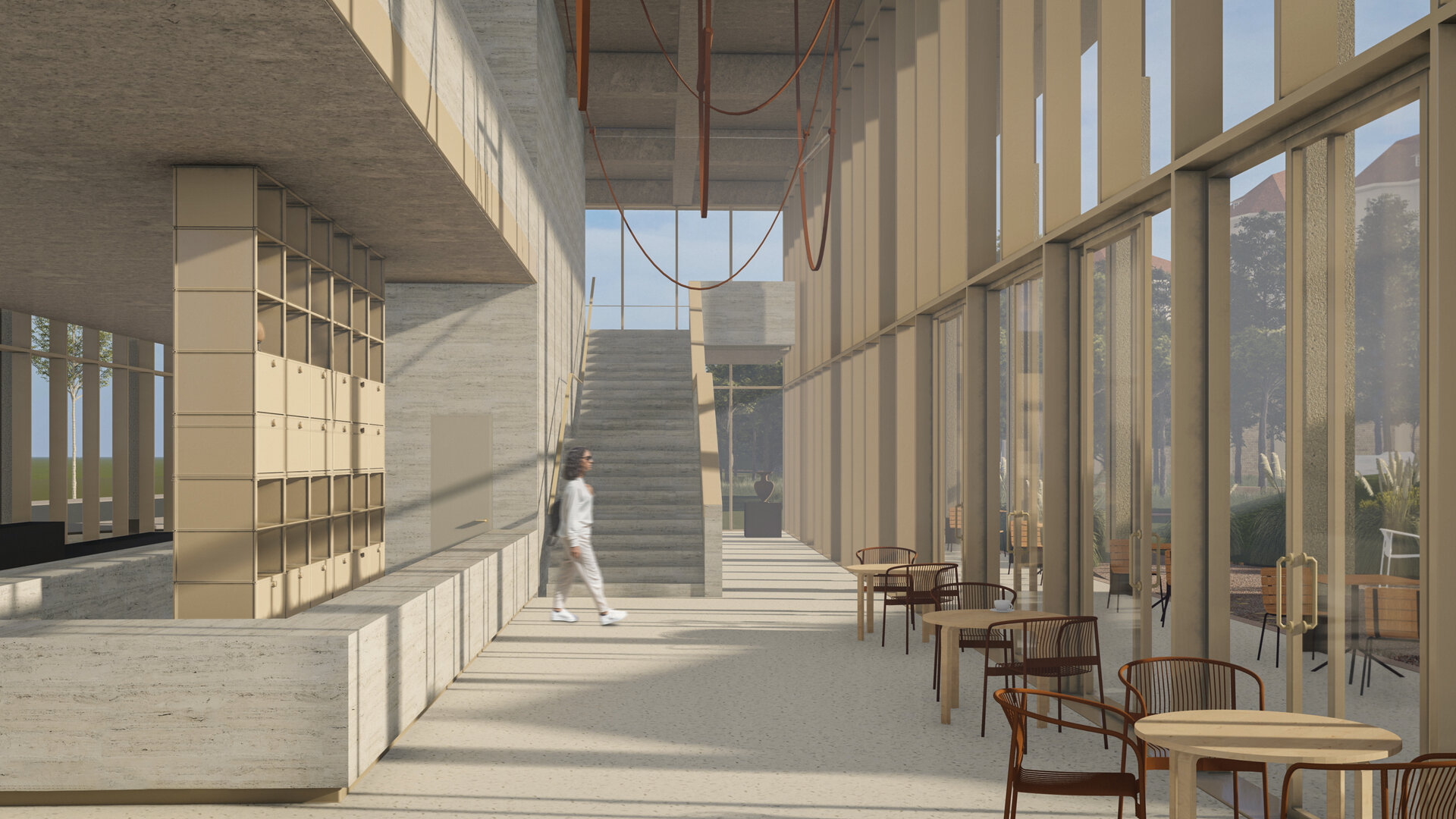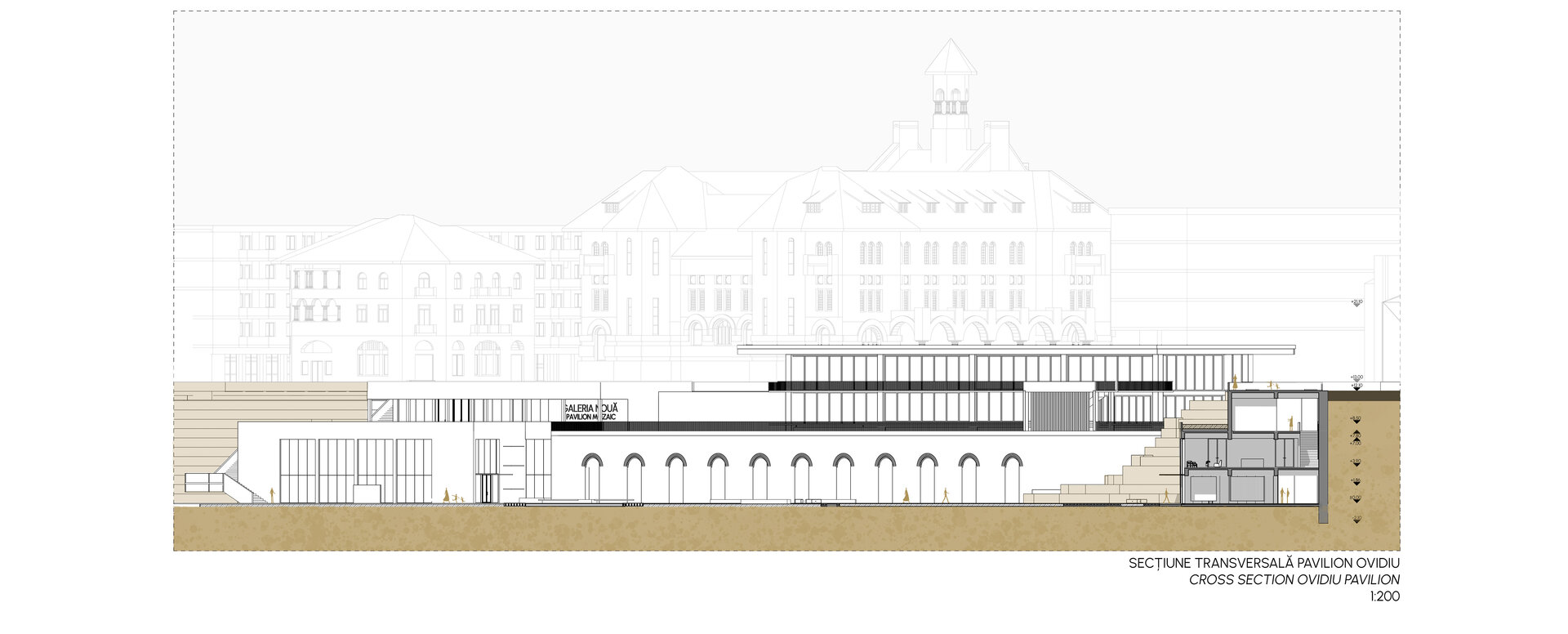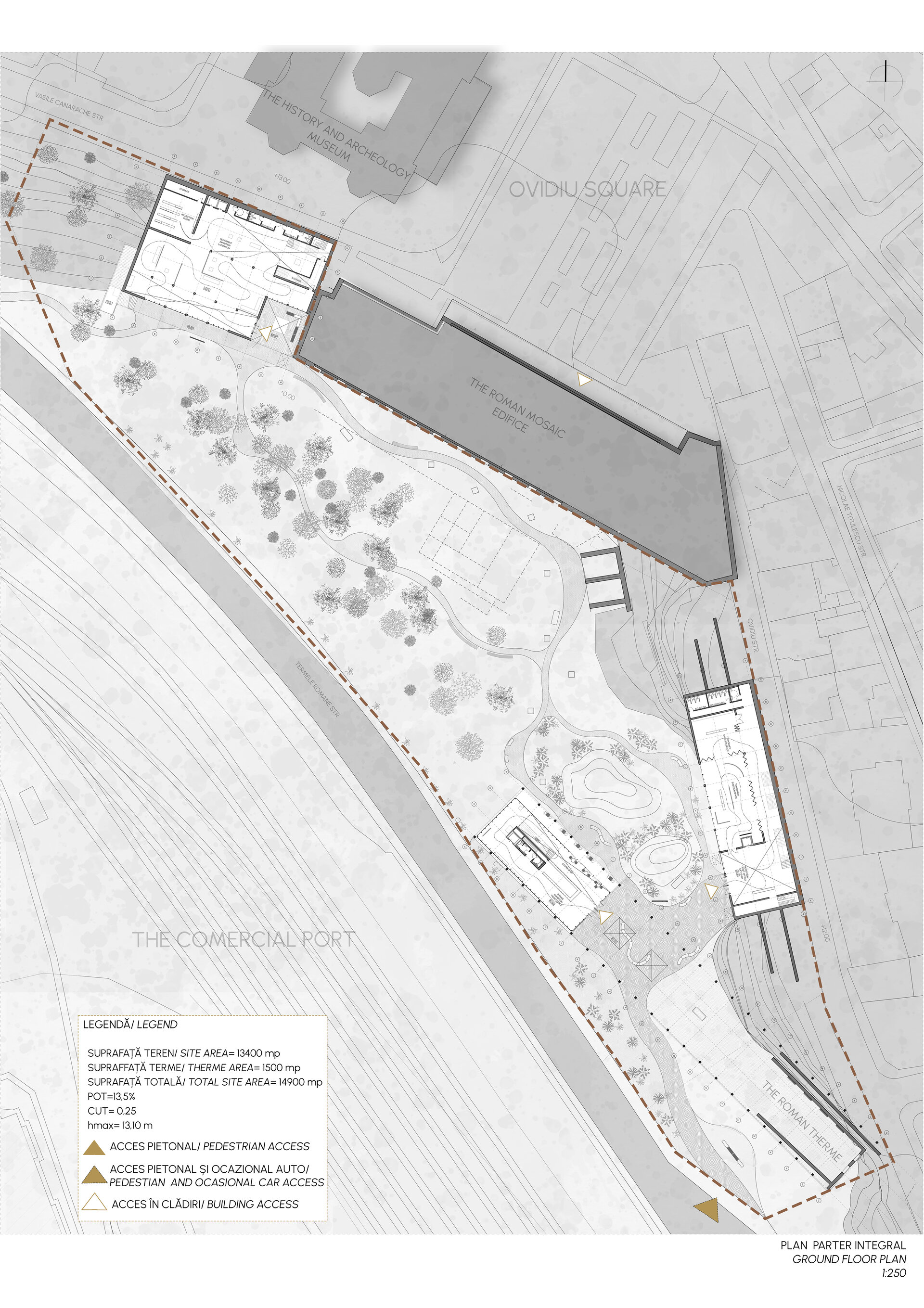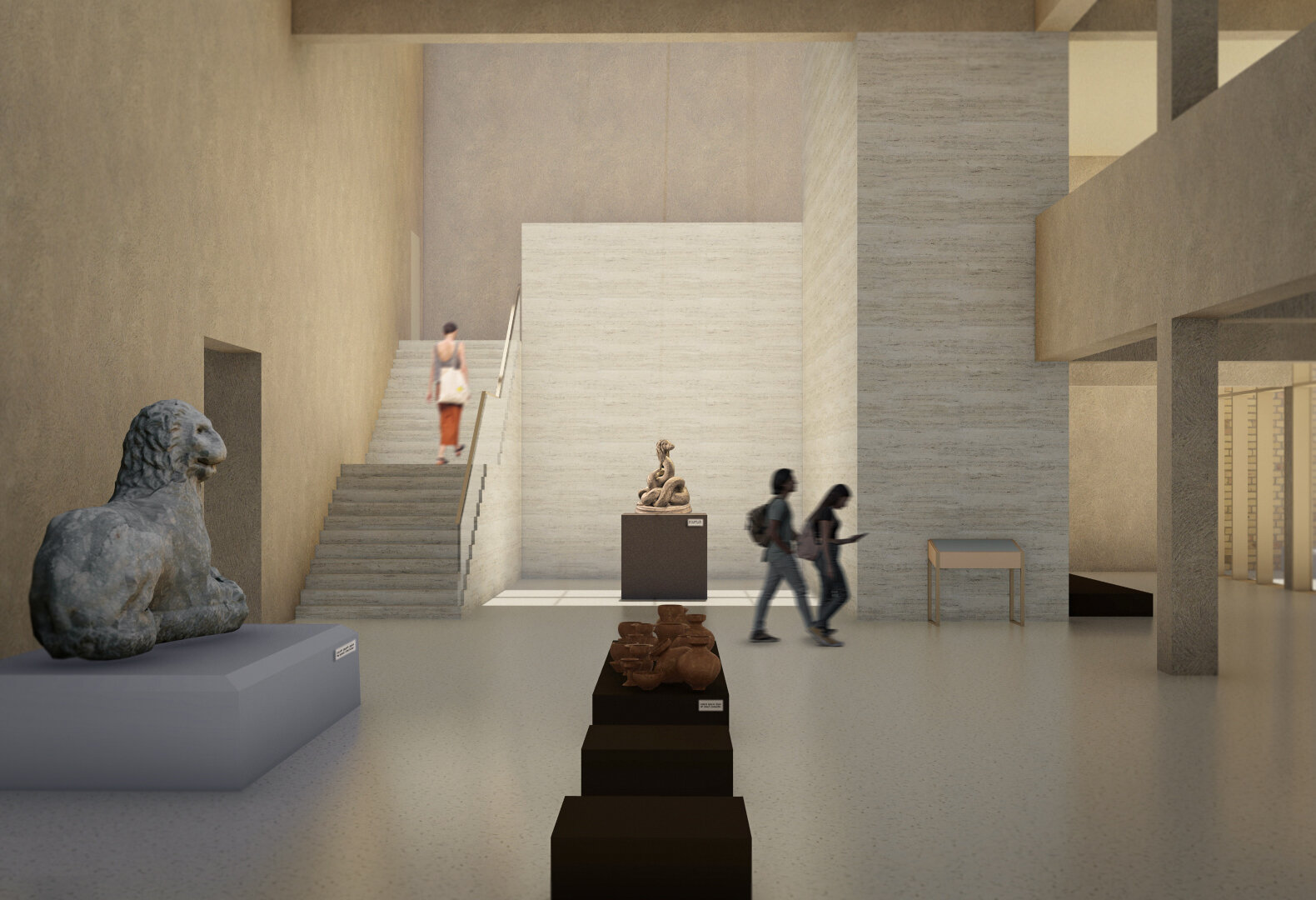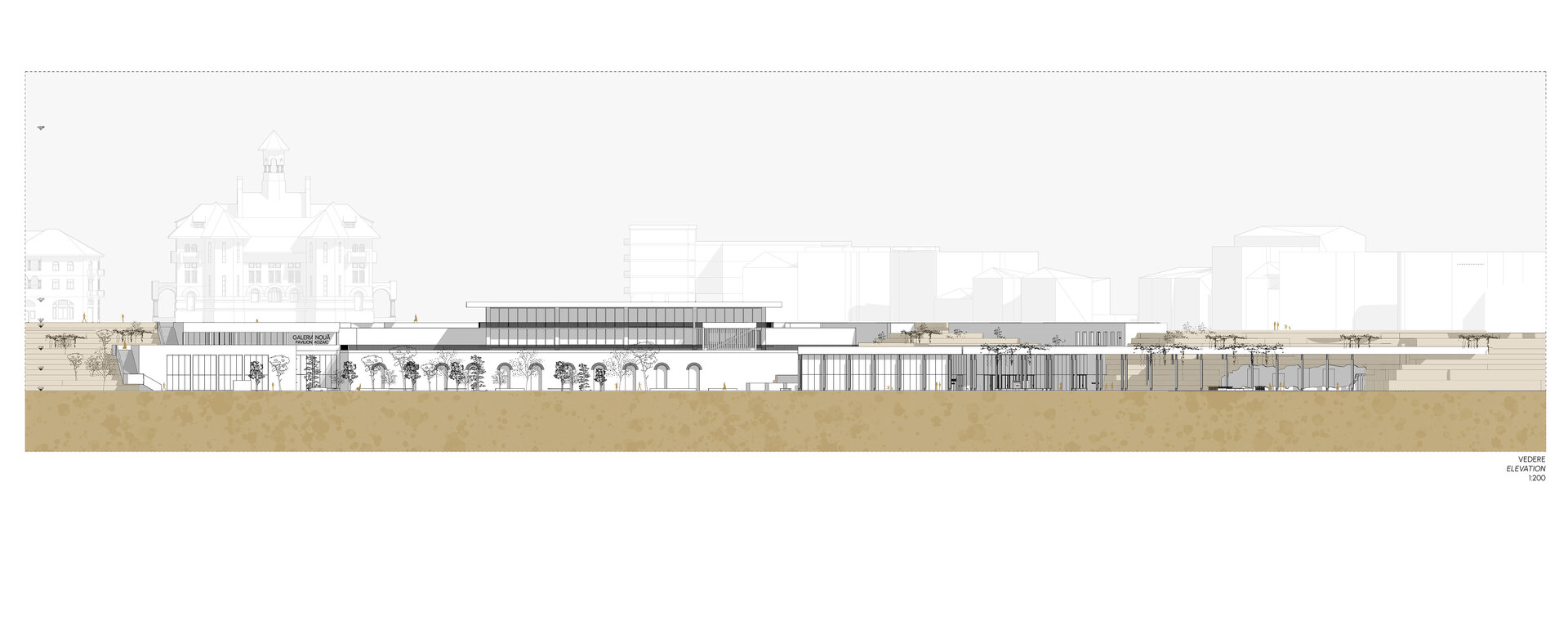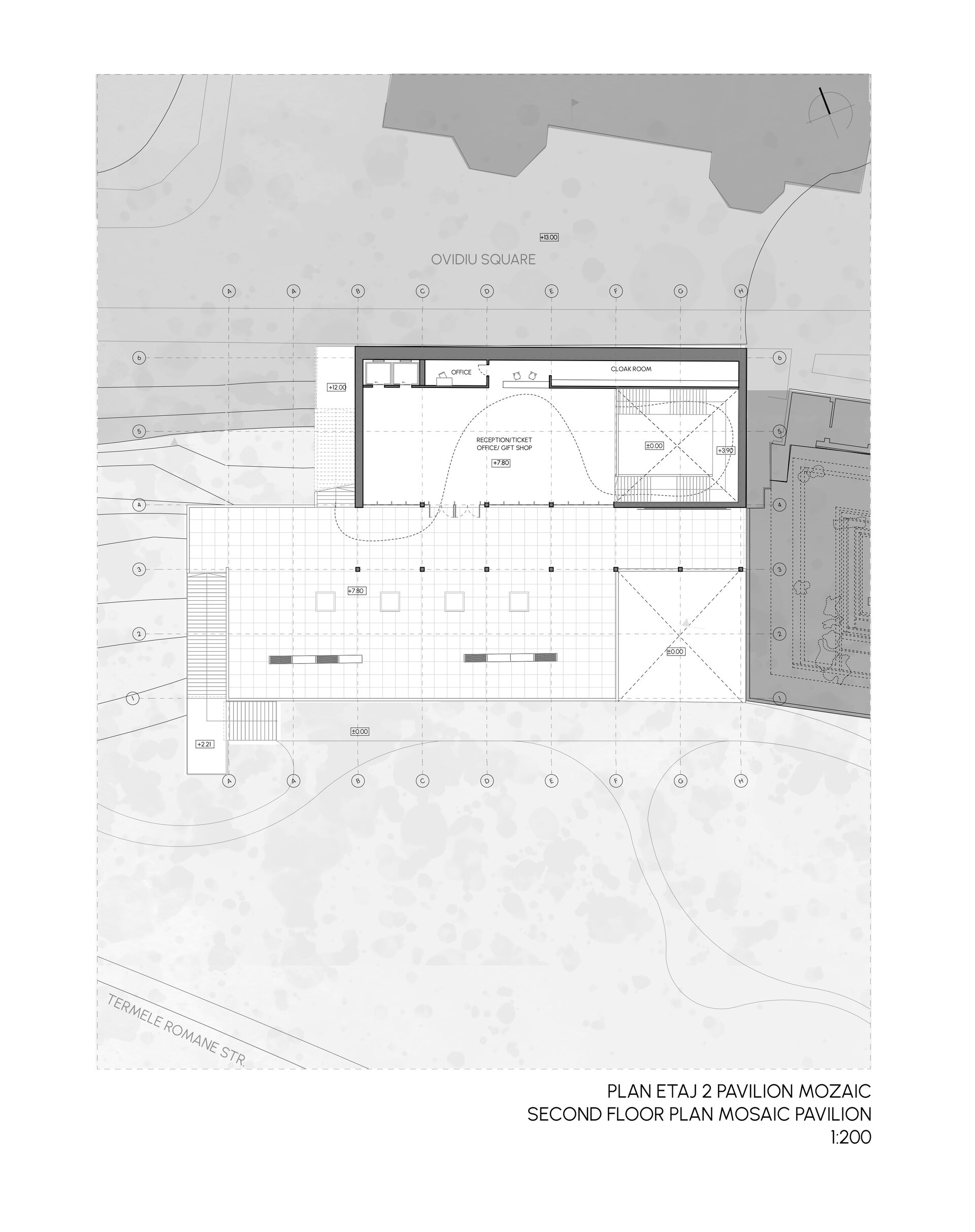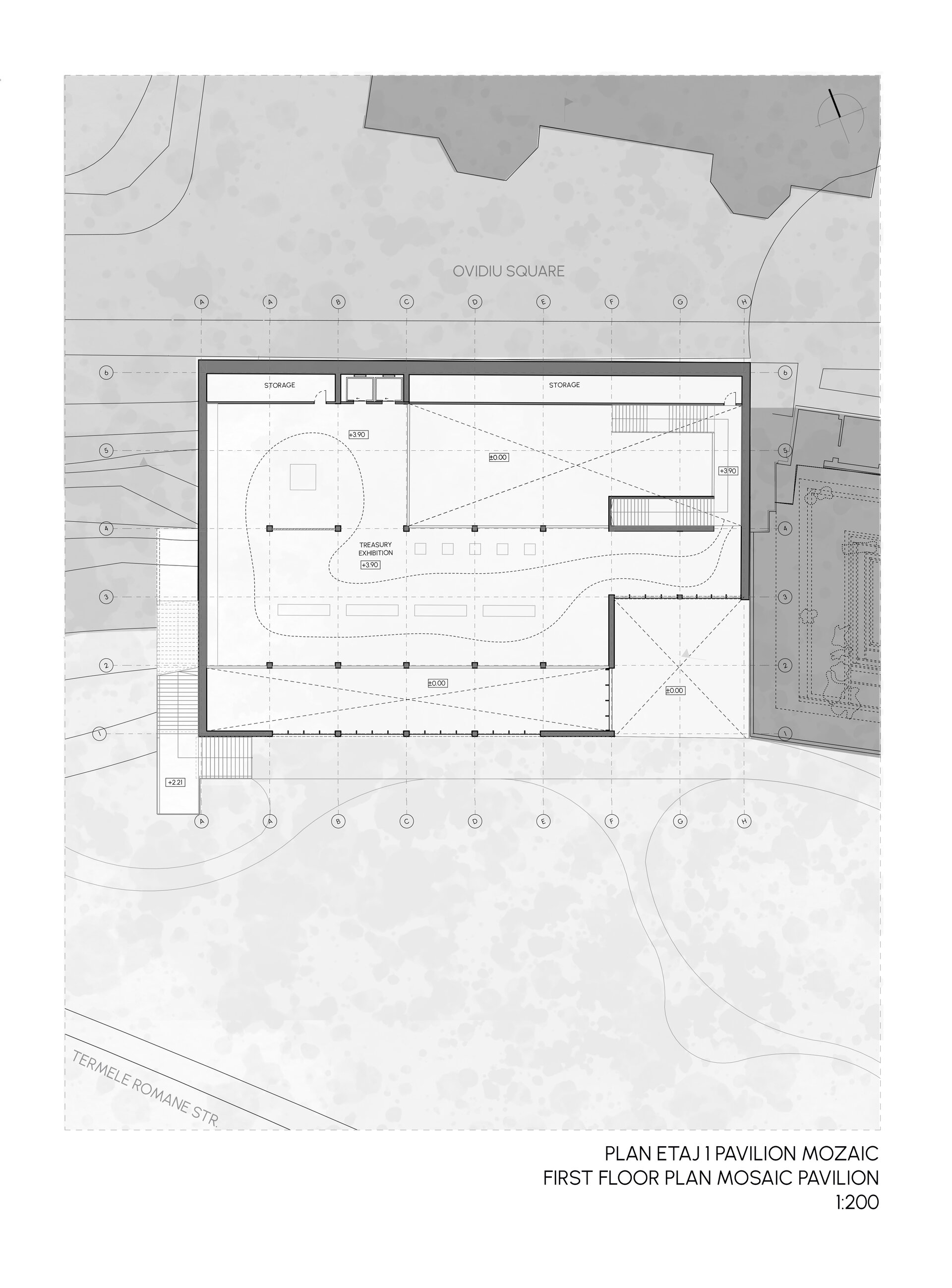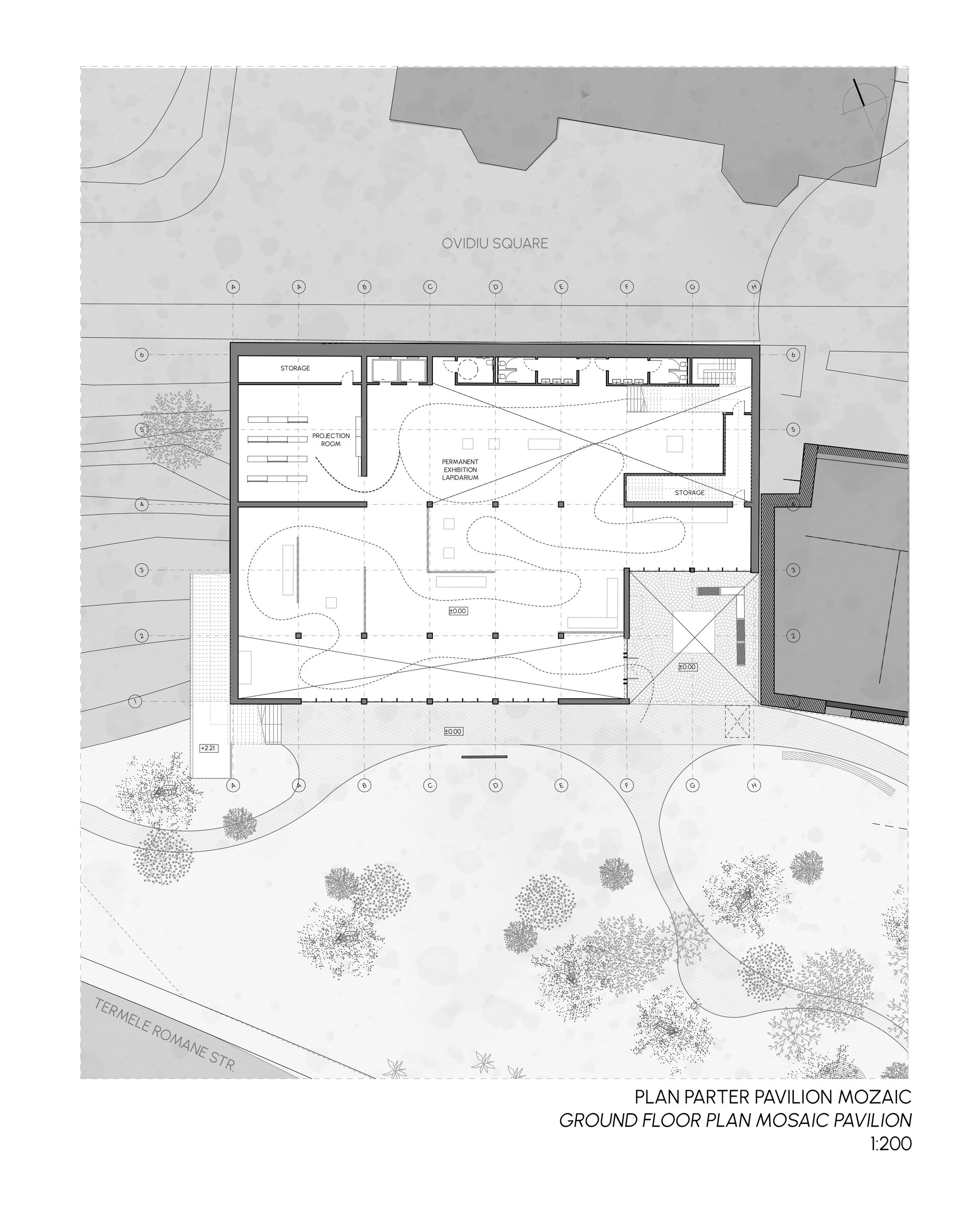
Constanța History and Archeology Museum the New Gallery
Authors’ Comment
I chose this theme not only because Constanta is my hometown but also because museums, for me, are the key to a city, and few of Constanta's museums and cultural spaces can compare with contemporary examples, especially considering the cultural and touristic potential of the coastline. Thus, through this project, I aim to synchronize Constanta's museum program with international standards, showcase the city's history, create new opportunities for interactive education, and host various temporary exhibitions for both residents and tourists to increase interest in the city's history and archaeology, to discover more about what Constanta truly represents.
The purpose of the New Gallery is to reactivate the western slope of the Peninsula and to increase the interest in history and archaeology, thereby enhancing the cultural vitality of Constanța. The project expands the museum network in the city center and completes the pedestrian route. The ensemble consists of three pavilions: two developed along the cliff to consolidate the eroding slope and blend into the natural landscape, and a third volume extending from the ruins of the Roman Therme, which it protects and showcases. The Mosaic Pavilion, located next to the Roman Mosaic Edifice, houses the permanent treasury exhibition; the Ovidiu Pavilion includes halls for temporary exhibitions, a conference room, and workshops for visitors; and the Therme Pavilion contains the permanent exhibition dedicated to the Roman Therme and the objects discovered during construction. The materiality of the project—apparent pigmented concrete, metal, and glass—reflects the materials and colors found in neighboring buildings, such as the Roman Mosaic Edifice. These elements create a poetics of materiality, being juxtaposed, tectonic, and transparent. The pavilions are connected to the outside through buffer spaces, liminal spaces, porticos, patios, or urban pockets that facilitate the transition from indoor to outdoor space. Through the harmonious integration of exhibition and functional spaces into the existing landscape and the enhancement of archaeological remains, the project aims to enrich the cultural experience of both residents and tourists.
- Conversion and extension of the former Bourul Factory in Bucharest. Urban Hub for students
- Reimagining the Leonida Garages - Contemporary Cultural Space Bucharest
- Lost Bucharest Museum
- Recovery of Callimachi-Văcărescu ensemble. Cultural and touristic circuit at Mănești, Prahova
- Memorial Museum of Bucharest Pogrom
- ICA - Institute of Cinematographic Arts (in Timisoara)
- Landscape habitat: Extension and conversion of the former imperial baths of Herculane
- Constanța History and Archeology Museum the New Gallery
- Extension of the Independence Cinema with a Film and Media Faculty, Târgoviște
- Agricultural Research Center in Cluj
- City and Community - Youth Community Center on Dacia Boulevard, Bucharest
- “George Coșbuc” Flower Market - Rehabilitation and Expansion
- “Baba Novac” neighborhood center - Rehabilitation of the “Rucăr” commercial complex in Balta Albă, Bucharest
- Medresa, cultural center for Medgidia’s turkish-tatar community. Reintegrating the turkish bath into the urban circuit
- Workspaces for Creative Industries. Christo Gheorgief House
- Day-Care Centre. Nifon Mitropolitul House
- Archaeology Center in the Constanța Peninsula
- Tab. Socio-cultural Incubator. Conversion of the Bucovat Tannery, Dolj
- Community Center, Ferentari
- Art school for children
- Recomposing a lost urbanity. Cultural intervention in the Historical Center of Brăila, Romania
- Factory, School, Campus. Vocational School on the Abandoned Drajna Timber Factory Site, Măneciu County
- Interactive music center
- Catechesis center on Biserica Amzei street, Bucharest
- Center of creation and contemporary culture
- Cultural center - Extension of the “Radu Stanca” National Theater in Sibiu
- Bolta Florești - Community Ensemble
- Digital Fabrication Laboratories. Adaptive reuse of the “Ciocanul” Trade School, Bucharest
- The conversion of the chapel within the former noble estate of the Csávossy family, Bobda
- The house with ogives
- Cultural Forum in Brăila
- Sportul Studențesc Palaestra
- Forest of Arts - Cultural Center & Artist Residencies Timișoara
- Transformation and durability: Red Sand Fort, intervention in the Thames Estuary
- Danube waterfront reimagined. Restoration and conversion of the former shipyard of Drobeta-Turnu Severin, RO
- Revitalization of the Neculescu Inn
- Creative and Research Hub “Unfinished Section Studio”
- Vocational School in Brasov
- Extension of the Pomiculture Research and Development Centre in Băneasa, Bucharest
- Arts and Science Park, Splaiul Unirii Bd.162, Bucharest
- Behind the apartment blocks. Urban reweaving. The Theodor Sperantia Neighbourhood
- The House of the Romanian Academy - From Object to urban fabric
- Chisinau Museum of Modern and Contemporary Art
